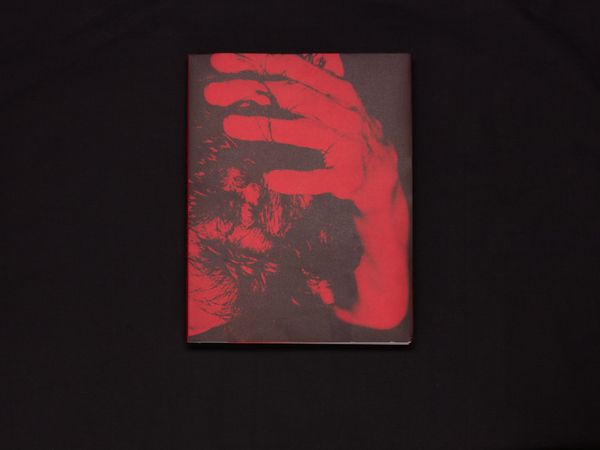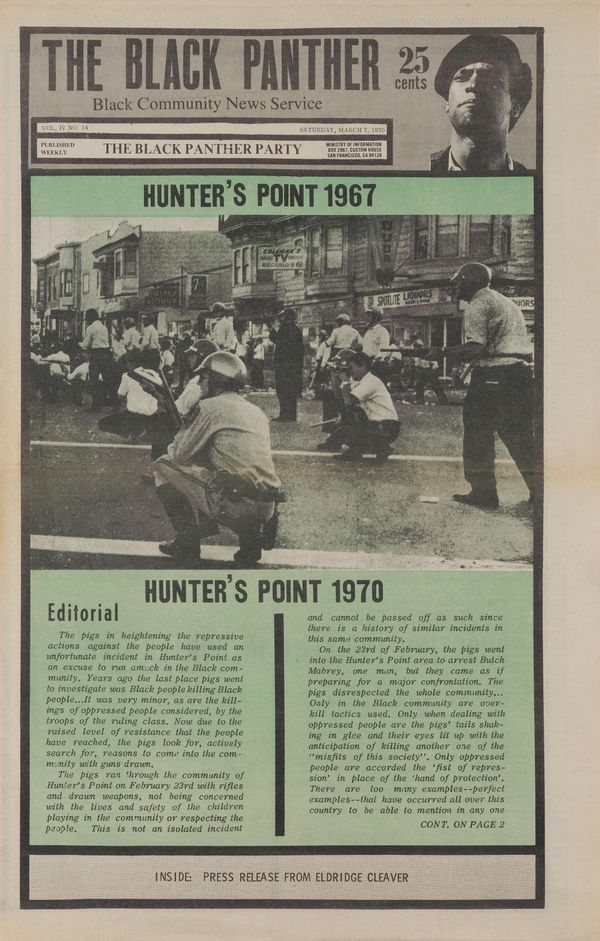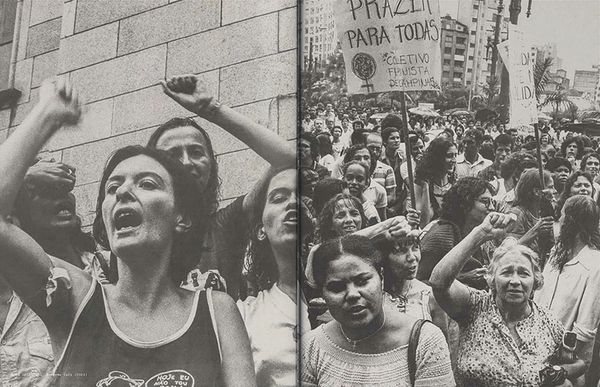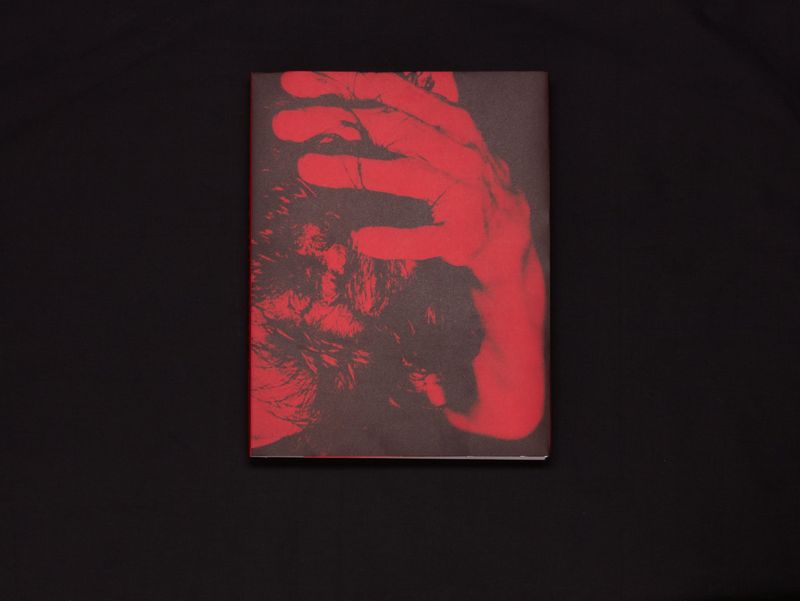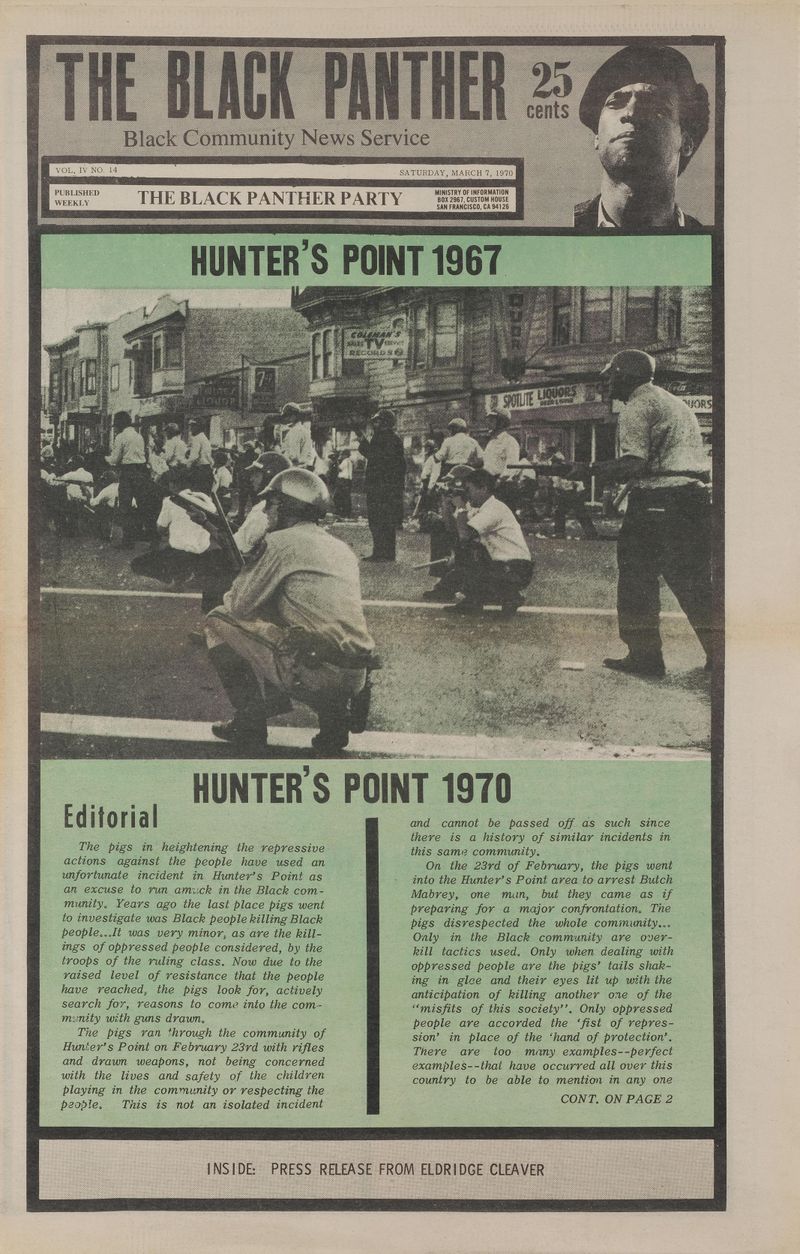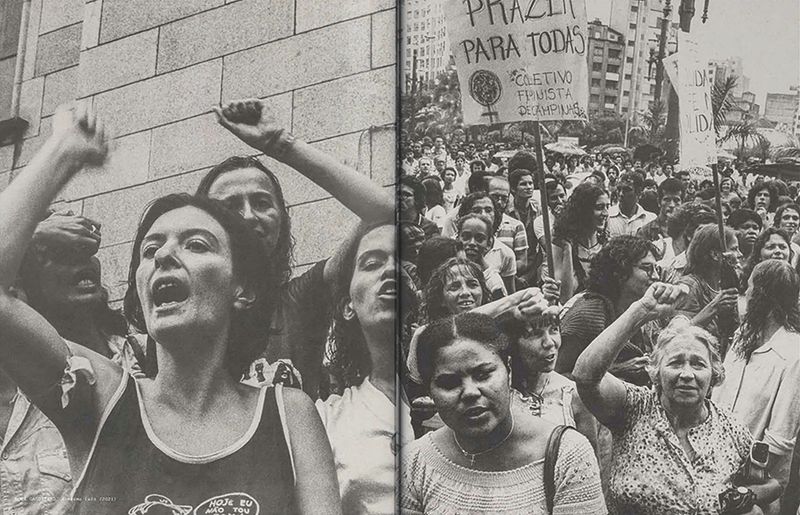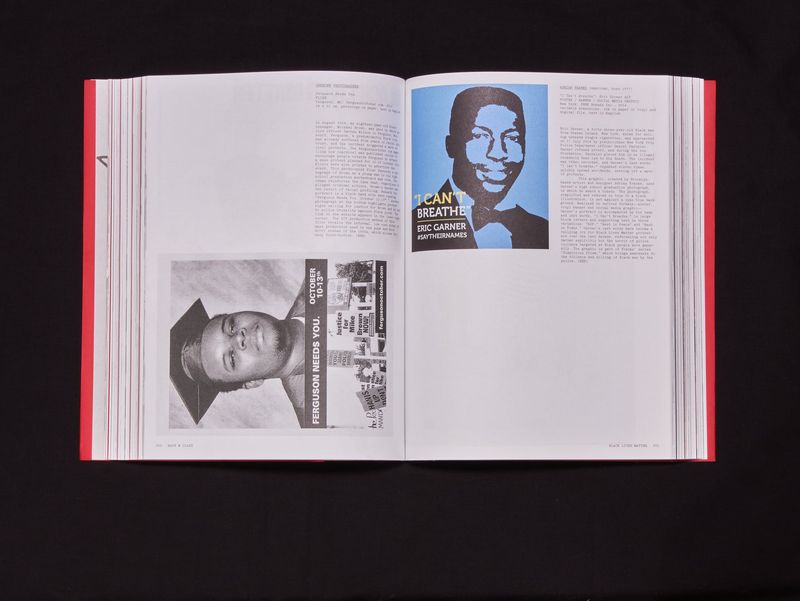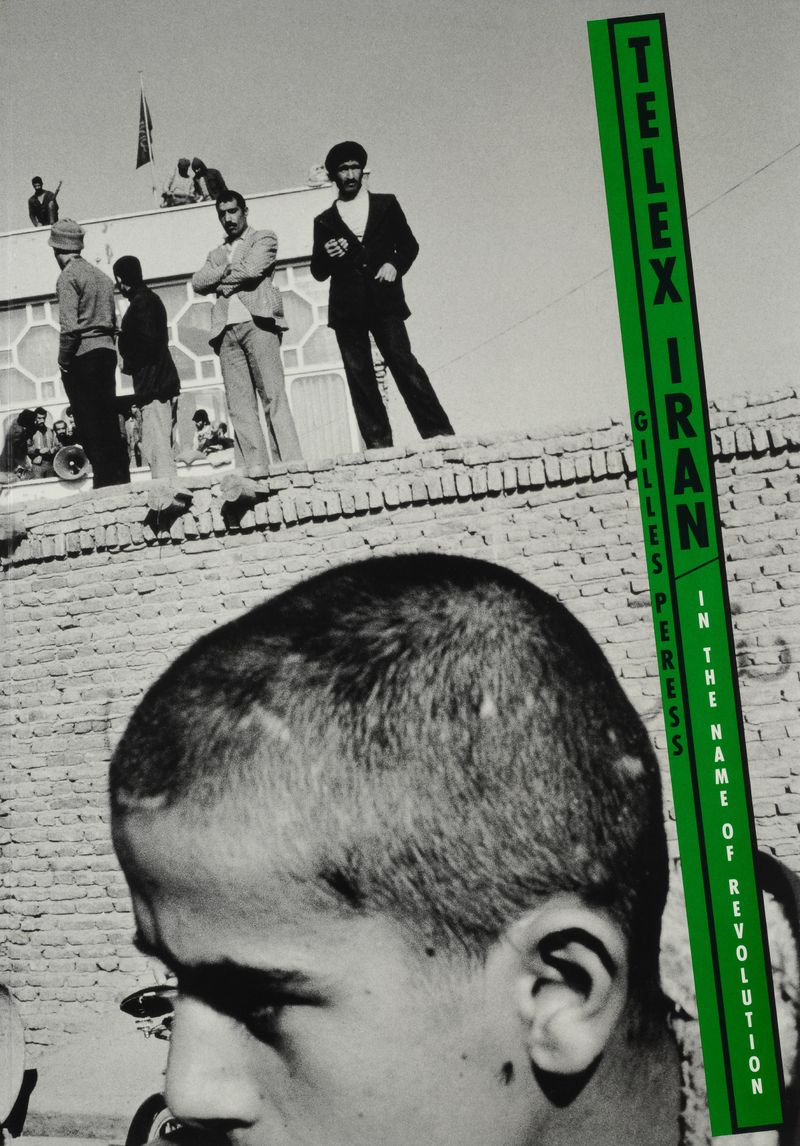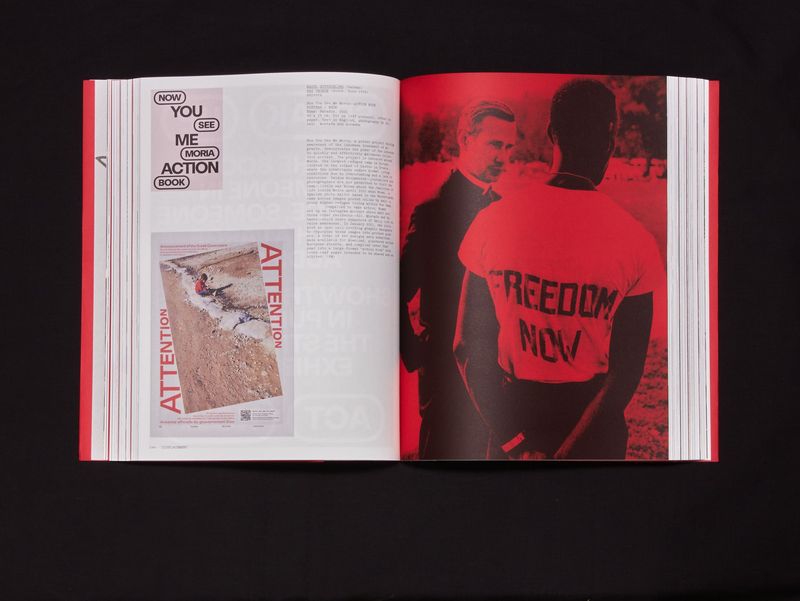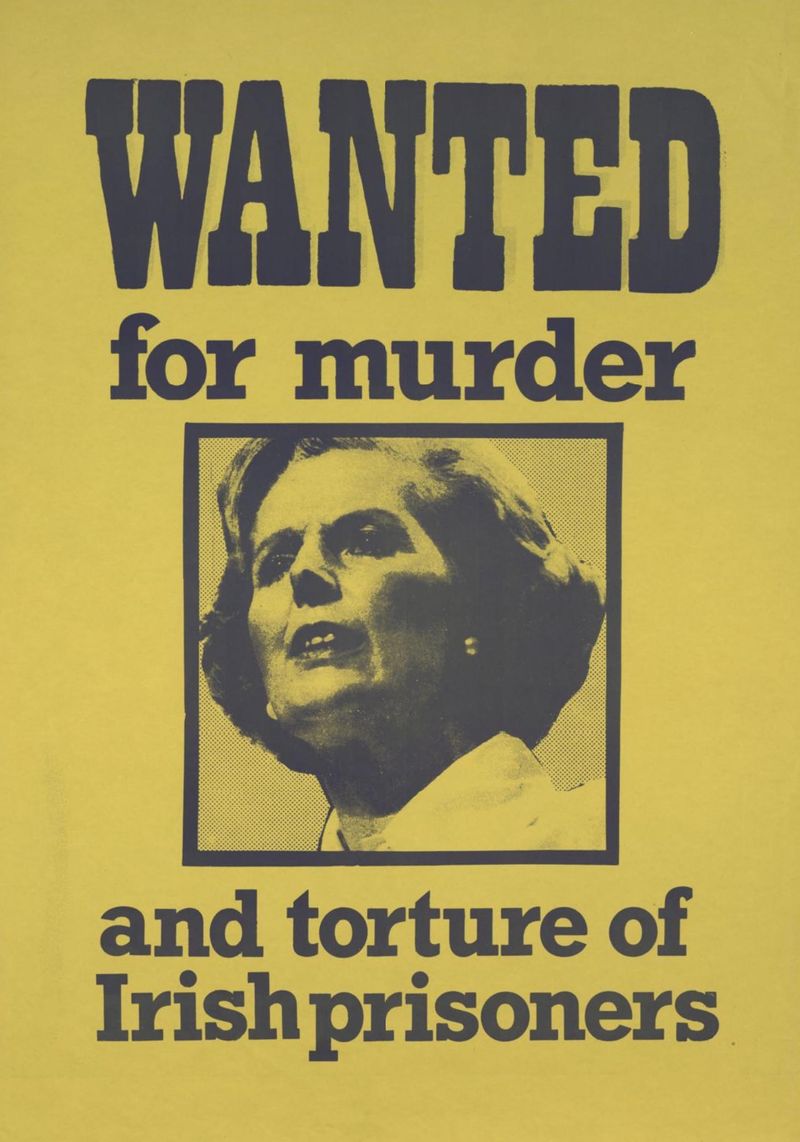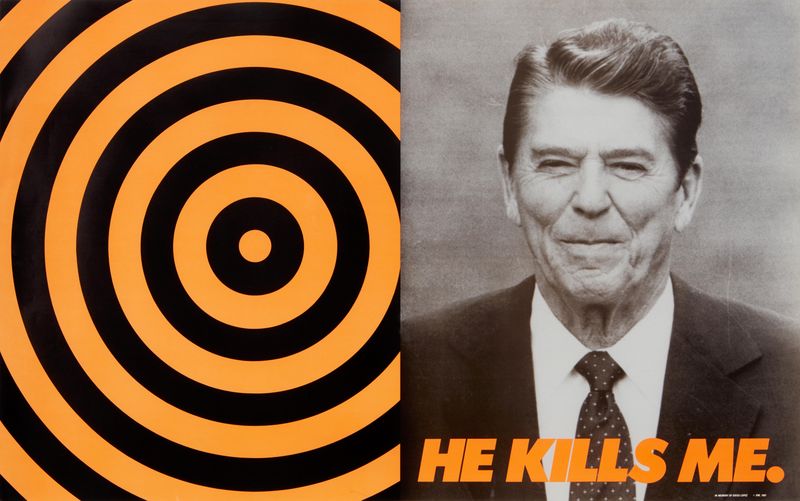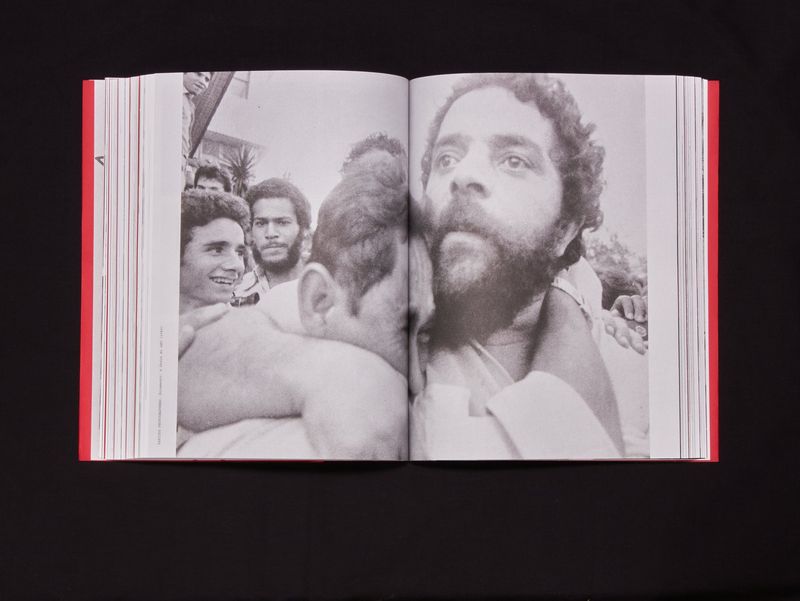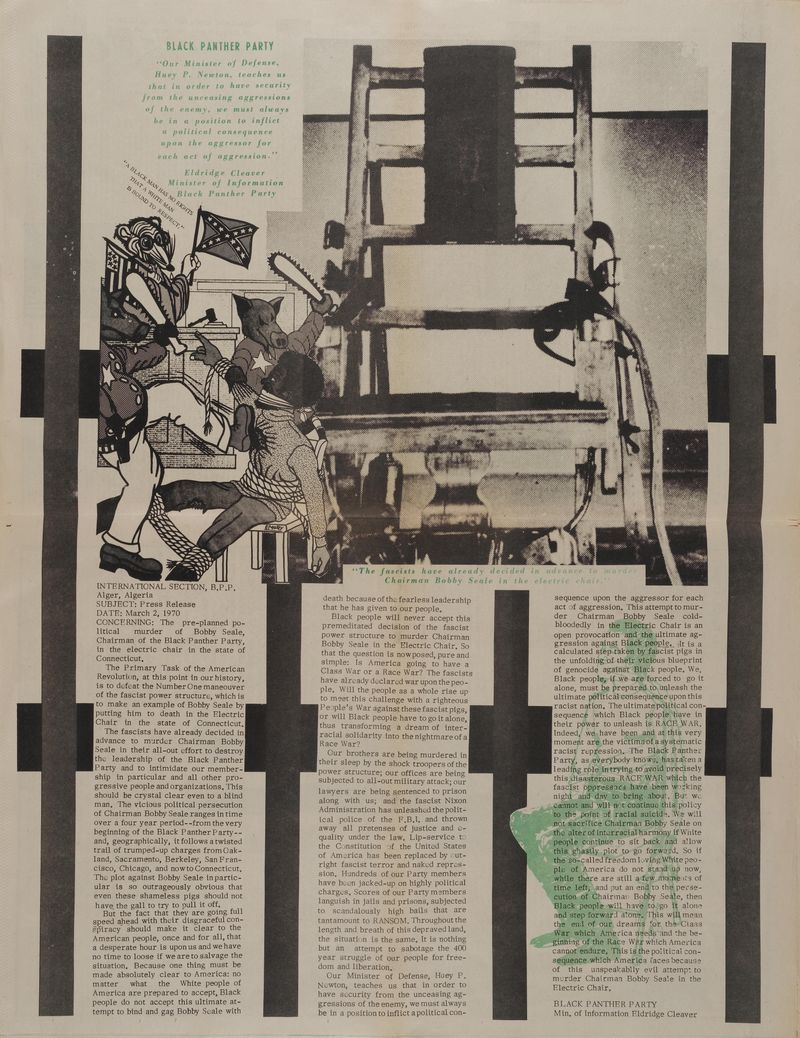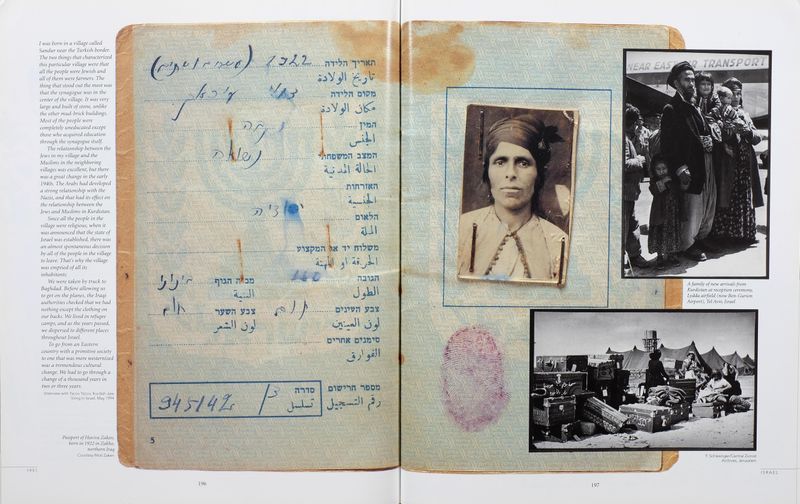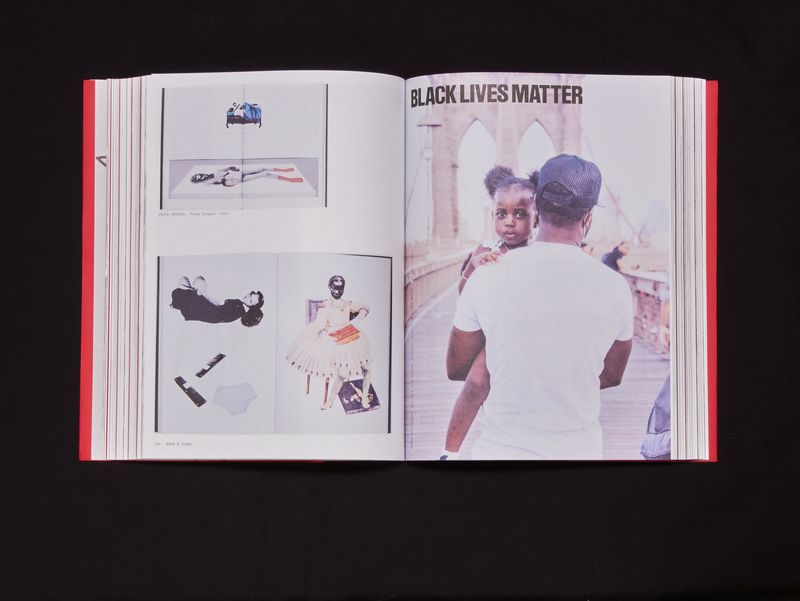Photobook Review: Flashpoint! edited by Russet Lederman and Olga Yatskevich
-
Published25 Feb 2025
-
Author
- Topics Photobooks
Flashpoint! Protest Photography In Print, 1950 – Present is a collection of protest publications: photobooks, posters, pamphlets, and zines are featured from a selection of photographers, artists, and collectives.
Flashpoint is divided into seven chapters: anti, gender, displacement, race and class, environment, political, and war and violence, with each chapter divided into sub-chapters.
It begins with Japanese protest photography, photography that documents the protests against the US-Japanese Security Treaty in the 1960s. Here there is the idea (that is not entirely accurate according to the accompanying essay) of a protest photography aesthetic, of the blurred and grainy night time visions of students battling police somehow encompassing the violence and disassociation of the time.
Weaved into the fabric of Flashpoint are more diverse functions of protest images. In the gender section we see Donald Moffett’s AIDS poster. Produced under the auspices of Gran Fury, ‘the unofficial propaganda ministry associated with ACT UP, a grass roots activist group formed to unite individuals in protest, education and awareness about HIV/AIDS’, the poster shows an image of Ronald Reagan with the accompanying text, HE KILLS ME, a message designed to highlight the US president’s silence and inaction at the height of the HIV epidemic.
The advocational element of protest is also apparent in the Pro-Choice Public Education Poster. With a Barbara Kruger sanctioned design in Futura Bold Italic, the text reads ‘77% of anti-abortion leaders are men. 100% of them will never get pregnant.’ Another image is titled Operating Room and features a scuzzy bathroom, the raw edge of reality of an abortion ban. This is a protest in the service of deeper seated activism, the shock language and imagery run in parallel with lobbying, advocating, and deeper-seated political protest.
That spread across activism, advocacy, political outrage, and the more photographic works is evident throughout Flashpoint. There are a handful of photobooks where the visual power of the work had an impact that went beyond the photographic. Prime among these is Ernest Cole’s House of Bondage, a photobook divided into chapters that detailed exactly how the South African apartheid regime used employment, residency, housing, and education to systematically oppress black South Africans.
House Of Bondage made the abstract concrete through brilliant, brave photography that laid the humiliation of apartheid bare. It served as a model for subsequent books such as Philip Jones Griffiths Vietnam Inc. (a great book, but far less influential in its time), and was a case where photography did make a difference in making the horrors of apartheid clearly visual.
Cole’s use of cold hard facts is just one of multiple strategies that have been used to affect people, and ultimately change ideas, opinions, and behaviour. There is also accusation, shock, empathy, appeal to a common humanity, and salvation.
The accusatory voice is accompanied by salvation in the section on Bobby Sands, the IRA hunger strike who died in 1981. On a US Noraid poster we see his smiling face accompanied by a salvatory text ‘Don’t Let Him Die’. More basic information for the uninformed North American viewer is included in the line ‘Bobby Sands is an Irish Prisoner-of-war on Hunger Strike In Long Kesh Prison.
A more accusatory poster shows a portrait of British prime-minister Margaret Thatcher surrounded by the words ‘Wanted for murder and torture of Irish Prisoners’, a poster made at the height of Thatcher’s unpopularity in Britain. The poster comes with an appeal both for supporters of civil rights in Northern Ireland and a softer appeal to the numerous people in the UK along the lines of your enemy’s enemy is your friend; a key appeal to the tens of millions of people in the UK who despised the prime-minister at the time.
Multiple projects examine the process of representation, getting beneath the surface of how images are made, digested, and understood. Gilles Peress’s Telex Iran features images during the ‘American Hostage Crisis’ that followed the Iranian revolution in 1979, the communications between Peress and his editors in New York and Paris revealing a mass of confusion and misrepresentation in a country where nobody really seems to know what is happening.
Susan Meiselas’ Kurdistan: In The Shadow Of History considers the broader history of representation of Kurds, the ways in which they anthropologists, photographers, political leaders and mapmakers have sought to erase national and ethnic identity. As well as including documentation of Saddam Hussein’s horrific Anfal massacres, the project includes letters, documents, family photographers and personal testimonies that expand ideas of who Kurds are and in turn what their nation might look like.
The Black Panther newspaper with design by Emoury Douglas features text and image that helped the publication sell over 100,000 copies weekly. One edition features police brutality in San Francisco’s Hunter Point, with images of police as pigs beating an African American man as he breaks free of the gags and ropes he has been bound in. A possum (I think) bearing both a six-starred Stars and Stripes and a Confederate flag looks on. The accompanying text asks us (in the light of the impending execution by electric chair of Bobby Seale, the chairman of the Black Panther Party) ‘Is America going to have a Class War or a Race War? The fascists have already declared war upon the people, Will the people as a whole rise up to meet this challenge with a righteous People’s War against these fascist pigs, or will Black people have to go it alone, thus transforming a dream of interracial solidarity into the nightmare of a race war.’
It's a sentiment that, over 50 years later, somehow fits the present day. The language of protest may change, the issues don’t.
--------------
Flashpoint! Protest Photography in Print, 1950-Present is edited by Russet Lederman and Olga Yatskevich and published by 10x10 Photobooks.
2024
24 x 31 cm
576 pages
ISBN: 9798218459505
--------------
Russet Lederman is a writer, editor and photobook collector who lives in New York City. She has taught art writing at the School of Visual Arts in New York and writes on photobooks for print and online journals, including FOAM, The Eyes, IMA, Aperture and the International Center of Photography. She is a co-founder of the 10×10 Photobooks platform.
Olga Yatskevich is a cofounder of 10×10 Photobooks. She is a contributing writer to Collector Daily and the founder of the Facebook PhotoBooks Group. She was also involved with the Anamorphosis Prize, which promoted excellence in the field of self-published photobooks and photo-based artist books.
Colin Pantall is a photographer, writer and lecturer based in Bath, England. His next online courses and in person workshops begin in May, 2025. More information here. Follow him on Instagram.
